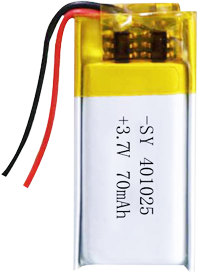Fast charging sounds great—until your battery swells, dies early, or worse, catches fire.
Lithium polymer batteries1 require careful control of charging and discharging rates2 to maximize lifespan3, performance, and safety.

Most users damage their LiPo batteries4 without realizing it—just by using the wrong rate. In this article, I break down how C-rates5 work, why they matter, and what to do (and avoid) to keep your battery healthy6.
Table of Contents
ToggleWhat are C-Rates and Why Do They Matter?
One number can mean the difference between safe use and a ruined battery.
C-rate7 is a way to measure how fast a lithium polymer battery8 is charged or discharged relative to its capacity.

🔋 Understanding C-Rates in Practice
C-rate9 (or "charge/discharge rate10") is expressed as a multiplier. A 1C charge rate11 means the battery charges in 1 hour. A 2C rate cuts that to 30 minutes. The same goes for discharge:
- A 2000mAh12 battery at 1C13 = 2000mA (2A) charging/discharging
- At 2C14, it charges or discharges at 4A
- At 0.5C, it charges or discharges at 1A
⚠️ Why C-Rates Matter
| Rate Type | Benefit | Risk When Misused |
|---|---|---|
| Low C-rate | Extends battery life15 | Slow performance |
| High C-rate | Quick charge or high output | Overheating, swelling, capacity loss |
| Balanced | Optimal mix of speed and lifespan | Requires monitoring and quality chargers |
Overcharging or over-discharging at high C-rates can generate internal heat. That accelerates chemical wear, reduces voltage stability, and may even lead to thermal runaway.
How Can You Charge LiPo Batteries Safely?
Quick charging is tempting—but long life comes from consistency, not speed.
To safely charge lithium polymer batteries, stay within the 1C rate, use smart chargers, and always monitor temperature and voltage.

🔌 My Charging Checklist
- Use only LiPo-compatible chargers – They’re calibrated for voltage precision and include balancing functions.
- Charge at or below 1C – For most hobby or device batteries, that means 1-2A max.
- Balance charge multi-cell packs – Keeps all cells within safe voltage range (4.2V max per cell).
- Never charge unattended – Especially at higher rates.
- Use a fireproof bag or box – In case something goes wrong.
🧊 Temperature and Charging Environment
Keep your batteries cool—literally. Charging above 45°C or below 0°C can degrade cells. I always charge mine in a shaded, ventilated area on a non-flammable surface.
🧠 Smart Charging Tech
Modern chargers offer features like:
| Feature | Function |
|---|---|
| Auto cut-off | Stops charging at full voltage (4.2V/cell) |
| Cell balancing | Equalizes cell voltages |
| Thermal monitoring | Prevents overheating |
| Discharge logging | Tracks battery history for diagnostics |
Use these features whenever possible to extend your battery life and avoid dangerous charging conditions.
What’s the Right Way to Discharge a LiPo Battery?
More power is fun—until your battery puffs up or fails mid-run.
To safely discharge lithium polymer batteries, stay within the manufacturer’s recommended C-rating, avoid deep discharges, and monitor voltage regularly.

📉 Discharge Rates and Real-World Use
LiPo packs are often labeled with both continuous and burst discharge C-rates:
- 20C continuous / 40C burst16: means the battery can deliver 20 times its rated capacity safely, and 40C for short bursts (5–10 seconds)
- Example: A 2200mAh battery @ 20C17 = 44A sustained draw
Pushing beyond this causes voltage sag, excess heat, or even internal damage.
⚠️ Avoiding Deep Discharge
Most LiPo cells have a minimum safe voltage of 3.0V. Dropping below this causes irreversible chemical breakdown. You should:
- Stop using the battery when voltage per cell hits 3.3–3.5V
- Use alarms or telemetry in drones/RC vehicles
- Let the battery rest after heavy use—don’t immediately recharge a hot pack
🧪 How I Monitor Discharge
I use a small battery checker between flights and set voltage cut-offs in my ESCs. If a pack feels unusually warm or drops voltage faster than expected, I retire it early. No second chances.
Conclusion
Charging and discharging lithium polymer batteries at the correct rates is the simplest, most effective way to extend their life and keep your devices running safely.
-
Understanding the best practices for charging Lithium polymer batteries can significantly enhance their lifespan and performance, ensuring safety during use. ↩
-
Exploring how charging and discharging rates impact battery performance can help you optimize usage and extend battery life. ↩
-
Learning techniques to maximize the lifespan of Lithium polymer batteries can save you money and improve device reliability over time. ↩
-
Proper maintenance of LiPo batteries can extend their lifespan significantly. Discover expert tips and techniques to keep your batteries in top shape. ↩
-
Understanding C-rates is crucial for maintaining battery health and performance. Explore this link to learn more about their significance. ↩
-
Keeping your LiPo batteries healthy is essential for safety and performance. Check out this resource for best practices and tips. ↩
-
Understanding C-rate is crucial for optimizing battery performance and longevity. Explore this link to learn more about its significance. ↩
-
Discover the benefits of lithium polymer batteries, including their applications and performance characteristics, by exploring this resource. ↩
-
Understanding C-rate is crucial for optimizing battery performance and lifespan. Explore this link to learn more about its significance. ↩
-
The charge/discharge rate directly impacts battery efficiency and longevity. Discover more about its effects on battery technology. ↩
-
A 1C charge rate is fundamental for understanding battery charging times. Learn more about its implications for battery use. ↩
-
Understanding battery capacity is crucial for selecting the right battery for your devices. Explore this link to learn more about mAh ratings. ↩
-
Grasping the concept of C ratings helps in optimizing battery performance. Check this resource for a deeper insight into C ratings. ↩
-
Exploring the impact of C ratings on battery performance can enhance your knowledge for better usage. Discover more about 2C ratings here. ↩
-
Exploring this resource will provide you with effective strategies to maximize your battery's lifespan and performance. ↩
-
Understanding this term is crucial for evaluating battery performance and safety in various applications. ↩
-
This calculation is essential for ensuring that your battery can handle the required load without damage. ↩

